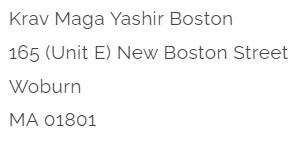About Krav Maga

About Krav Maga Yashir
Krav Maga meaning ”contact combat” in Hebrew is a system of armed/unarmed combat. The system is used by the IDF (Israeli Defense Forces), and is designed to get an untrained, new recruit, combat ready in the shortest possible time. To do this it uses simple techniques and movements that can be applied and reapplied against a number of different threats and attacks, both reducing the number of techniques and solutions that must be learnt, and increasing the amount of time each movement is practiced e.g., practicing a technique against one type of threat, that is also used in another, means that the other technique is also getting trained etc. This means that it takes a shorter amount of time to get the 10 000 repetitions that is needed to master a technique/movement. There is also a distinct Krav Maga method of teaching, which helps speed up the learning process; an approach which is very different to most martial arts. If you would like to learn more about the history of Krav Maga and Israeli Martial Arts, please click here.
Unlike other martial arts, Krav Maga isn’t defined by its techniques – these can and do change over time (this is one of the reasons that Head Instructor, Gershon Ben Keren, regularly returns to Israel, and brings instructors from Israel to teach in the U.S.). Sometimes, new solutions need to be found, because violent offenders change the way that they engage in attacks and threats e.g., some muggers and street robbers have started to push their knife, or sharp weapon – such as a sharpened screwdriver, or nail file etc. – somewhat into their target’s stomach, meaning that any “wrong” movement on the target’s behalf may cause them serious injury. When this became known, Krav Maga had to change how it dealt with knife threats in this position etc., as it would be inefficient, and time-consuming, to have to learn two different solutions; one for when the knife is just touching the stomach, and one when it has penetrated the flesh etc. As violence evolves so do the Krav Maga solutions that deal with it.
Krav Maga has solutions both to unarmed and armed assaults (knife, stick, gun, along with improvised weapons such as bricks, piping etc.). It also teaches tactics and strategies for dealing with multiple assailants – one of the assumptions that should be made when dealing with any violent individual, is that they have friends/acquaintances in the vicinity who can assist them; in a violent encounter it is all to easy to get “tunnel-focused” and only see the person in front of you etc. Part of our training is to improve overall situational awareness, so that hopefully predatory individuals can be identified whilst there is still time to exit an environment, however this needs to be maintained even during a violent confrontation in order to identify other individuals who may pose a threat/danger.
As well as teaching physical fighting skills i.e., what commonly gets referred to as “self-defense”, we also teach a “self-protection” or personal safety component that teaches our students how to predict, identify and avoid violence. All of Gershon Ben Keren’s books includes this information along with the situational components of violence that need to be considered in a violent encounter, as it is situations that determine solutions, rather than trying to force techniques to work in incidents where they can’t be applied. If you are interested in improving your safety and learning some Krav Maga techniques and gaining a better understanding into how the system works, please use the form below to book a 60-minute introductory Krav Maga class.
The cost for this 60-minute seminar is $25. This includes three months of access to our “Introduction to Krav Maga” online short-course. Our school has ample off-street parking and is easy to locate. The class is held at the following address:

To sign up, and book a class, please use the form below.